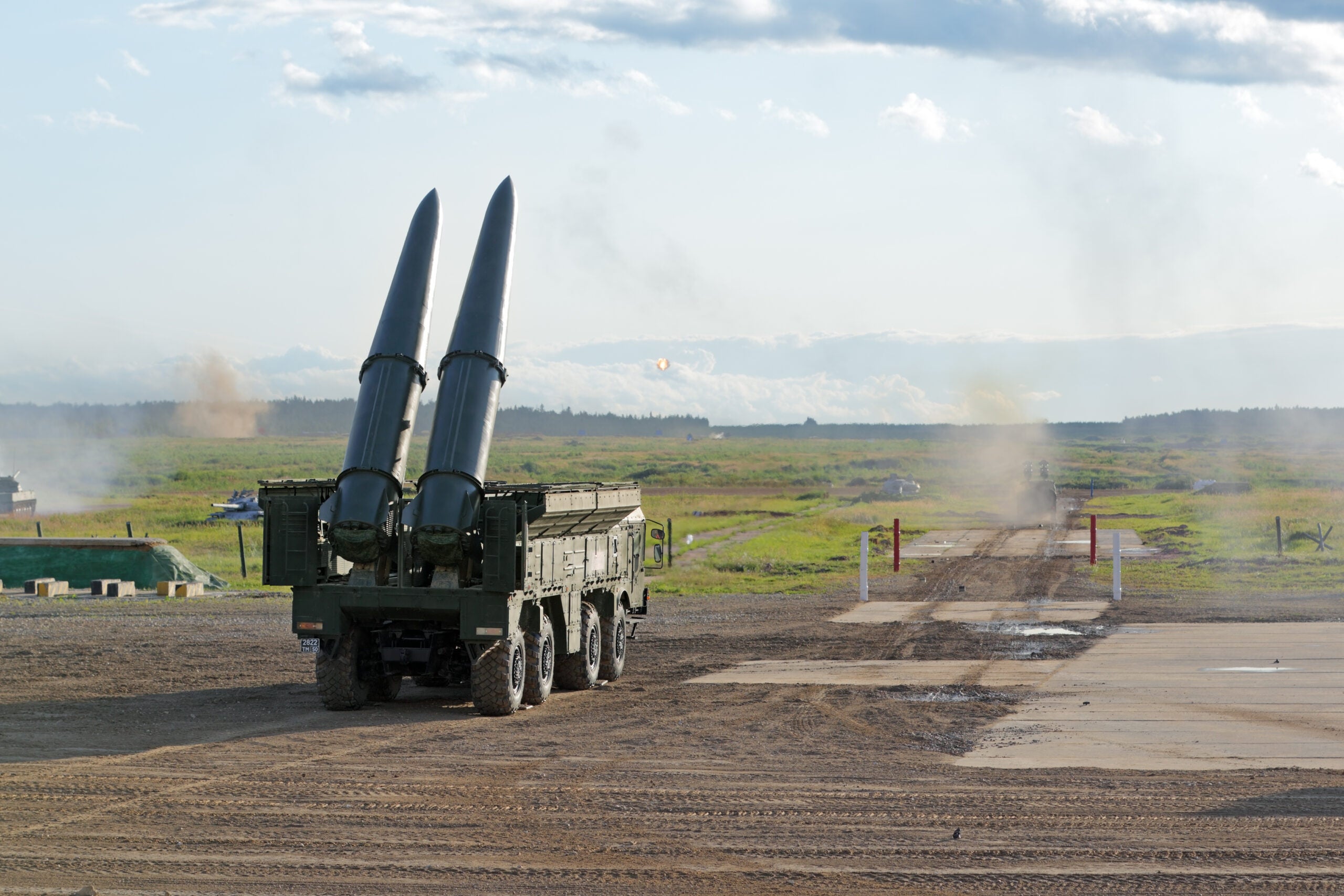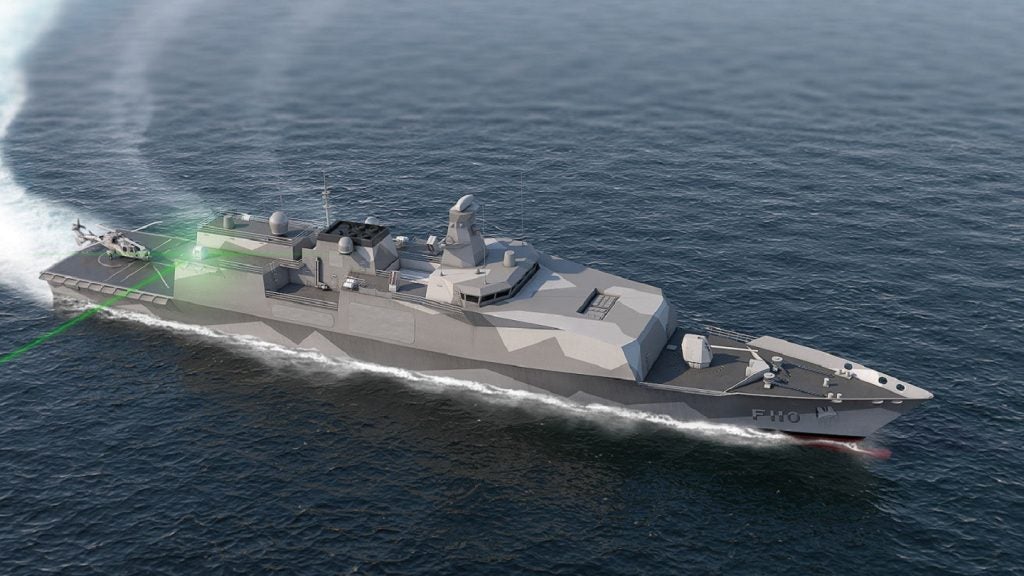
Russia claims to have used hypersonic weapons in the conflict in Ukraine, but their effectiveness is questionable. In the meantime, US officials are still trying to wrap their head around the level of technological sophistication the Chinese systems appear to display.
Meanwhile, with the extension of the AUKUS deal, the US, the UK and Australia will now jointly develop hypersonic systems, a move that will do little to ease tension in the Pacific. But will these developments have a significant impact on shaping the future of warfare, and who is set to win this new arms race?
How well do you really know your competitors?
Access the most comprehensive Company Profiles on the market, powered by GlobalData. Save hours of research. Gain competitive edge.

Thank you!
Your download email will arrive shortly
Not ready to buy yet? Download a free sample
We are confident about the unique quality of our Company Profiles. However, we want you to make the most beneficial decision for your business, so we offer a free sample that you can download by submitting the below form
By GlobalDataThe hypersonic arms race
Hypersonic weapons are highly manoeuvrable, fly at relatively low altitudes and their high speed renders regular anti-missiles capabilities obsolete. These qualities make it very difficult to detect and eliminate them. Hypersonic weapons can be cruise missiles powered by engines, or come in a glide vehicle version and be launched via a rocket into the upper atmosphere, from where the missile dives down to the target.
Last year, the US has confirmed that China had conducted multiple tests of hypersonic weapon systems as part of its effort to advance in space and military technologies. One of the hypersonic glide weapons reportedly flew through low-orbit space and circled the globe before it plunged into the South China Sea. The US said the system fired a missile as it approached its target while travelling at Mach 5.
Russia and the US have also pursued the development of hypersonic weapons for years, but China is well ahead of its counterparts. The level of technological sophistication in China’s hypersonic weapons repeatedly surprised – and worried – US officials. Whereas Russian systems such as the Raduga Kh-101 (RS-AS-23A Kodiak) air-launched cruise missile and Avangard hypersonic glide vehicles are already entering or are in service, the US has not yet developed its own equivalent.
However, some experts say that just because the US is behind Russia and China in fielding such capabilities, it does not necessarily mean the country is lagging behind in the hypersonic arms race. Instead of rushing to develop and field hypersonic weapons with capabilities like the Russian and Chinese ones, the US is focused on fielding new and advanced capabilities.
Although it is not expected that fully operational hypersonic weapons will enter service with the US military before 2023, this approach could provide Washington with an advantage once that happens.

The US’s response to Russian and Chinese developments
In mid-March, the US successfully tested a hypersonic missile. The country kept it secret for two weeks saying it sought to avoid escalating tensions with Russia prior to US President Joe Biden’s travel to Europe. The Lockheed Martin version of the hypersonic air-breathing weapon concept (HAWC) was launched from a Boeing B-52 strategic bomber. The missile reportedly reached at least Mach 5, flew above 65,000 feet and travelled more than 300 miles.
Not long after the test, the US, the UK and Australia announced they would diversify AUKUS, the Indo-Pacific alliance that was launched by the three countries in September to develop nuclear-powered submarines for Australia. One of the main points of broadening is the joint development of advanced hypersonic and counter-hypersonic weapon capabilities. The announcement was a part of the check-in event on the progress of AUKUS.
“We [are] committed today to commence new trilateral cooperation on hypersonics and counter-hypersonics, and electronic warfare capabilities, as well as to expand information sharing and to deepen cooperation on defense innovation,” said US President Joe Biden, British Prime Minister Boris Johnson and Australian Prime Minister Scott Morrison in a level statement.
“We reaffirmed our commitment to AUKUS and to a free and open Indo-Pacific. In light of Russia’s unprovoked, unjustified, and unlawful invasion of Ukraine, we reiterated our unwavering commitment to an international system that respects human rights, the rule of law, and the peaceful resolution of disputes free from coercion,” the statement said.
Failing Russian missiles
As Russia’s initial military objectives failed in Ukraine, fear is mounting that Russian President Putin will ramp up the use of its hypersonic and long-range missiles that have already caused devastation.
The Raduga Kh-101 proved to be successful during Russia’s intervention in the Syrian civil war, so much so that the Kh-101 became the army’s flagship long-range land-attack cruise missile.
“However, it is being used in far greater numbers in the war Russia is currently waging on Ukraine, with an apparent failure rate that, if correct, will be of significant concern to Moscow,” International Institute for Strategic Studies (IISS) senior fellow for military aerospace Douglas Barrie writes in an IISS blog post. “In the guise of the Raduga Kh-102 (RS-AS-23B Kodiak), the missile is also the Russian Air Force’s main air-launched nuclear-armed cruise missile.”
Based on a 21 March 2022 US Department of Defense briefing, an official noted that while Russia still possessed more than half of its air-launched cruise missile capability, it has already used many and seen a significant number of failures among them. Offering limited explanation about the nature of the failures, the official said, “either they’re failing to launch, or they’re failing to hit the target, or they’re failing to explode on contact.”
Hybrid, cyber and the future
Russia has also displayed the effectiveness of hypersonic missiles and the devastation they can cause both on military and civilian targets. But, as always, one single piece of equipment will not lead any military to victory. Future wars are likely to be just as hybrid in nature as the current ones, with emphasis shifting towards cyber warfare.
As societies and militaries become ever more connected, cyberattacks on networks that can eliminate command and control architectures will no doubt increase. Commenting on future warfare, the Indian Air Force Air Chief Marshal Vivek Ram Chaudhari in April told the India-based Economic Times: “The spectrum of conflict will be spread across all domains spanning from conventional to sub-conventional, kinetic to non-kinetic and lethal to non-lethal, all under a nuclear overhang.”
He added that weapons that could attack a country could be ranging from computer malware to hypersonic missiles, and there is an urgent need to develop capabilities across the full spectrum of conflict.








